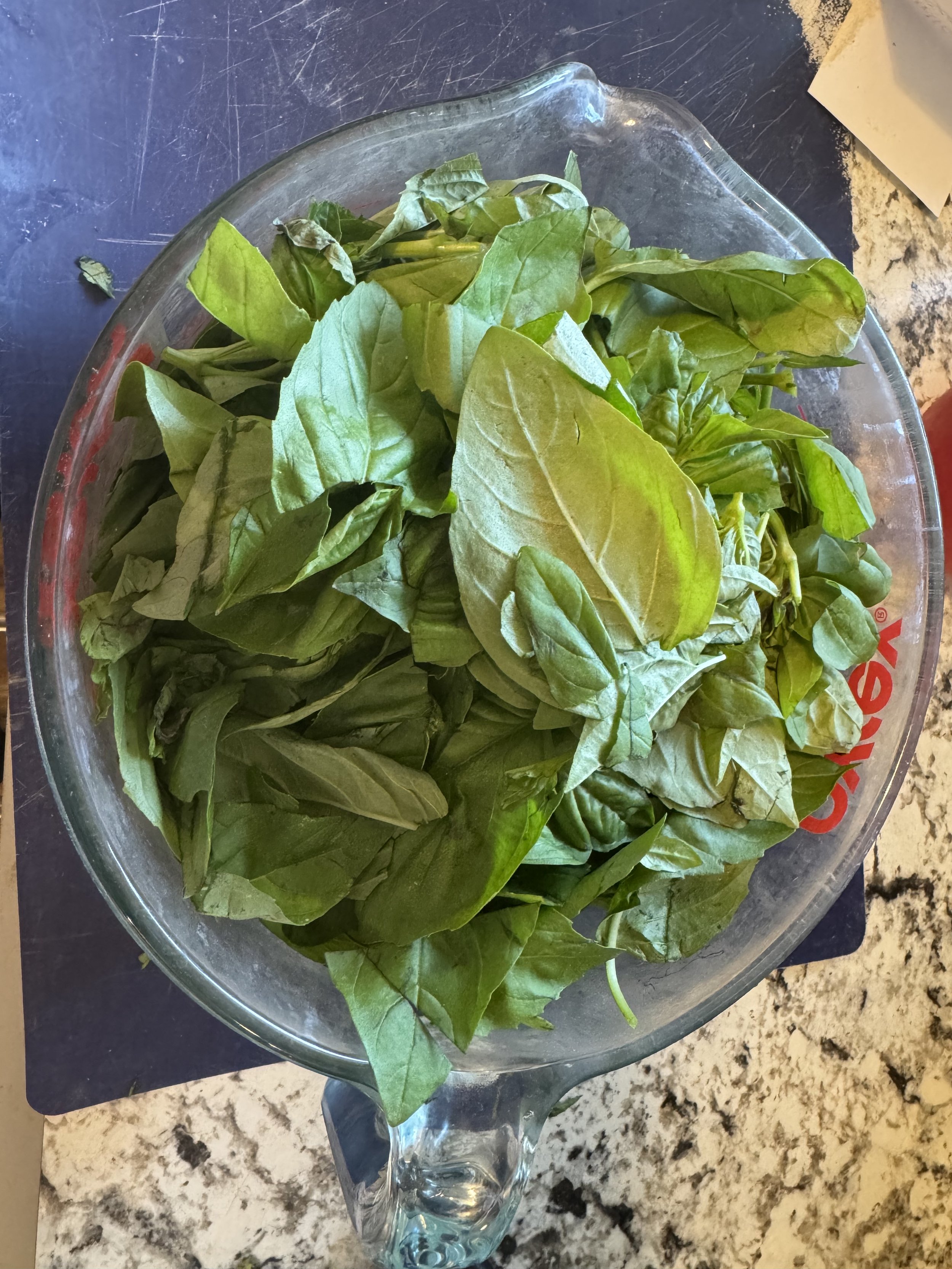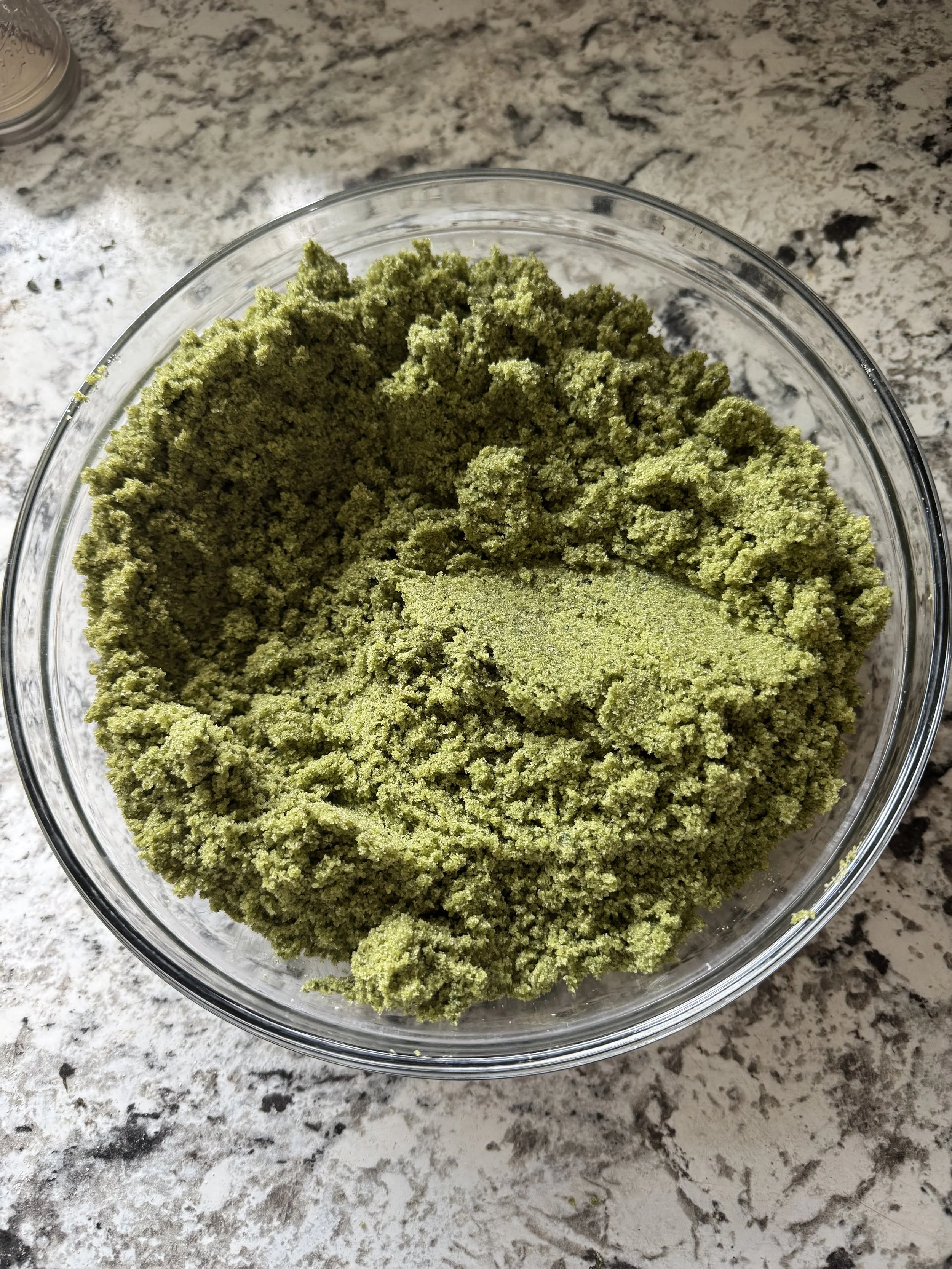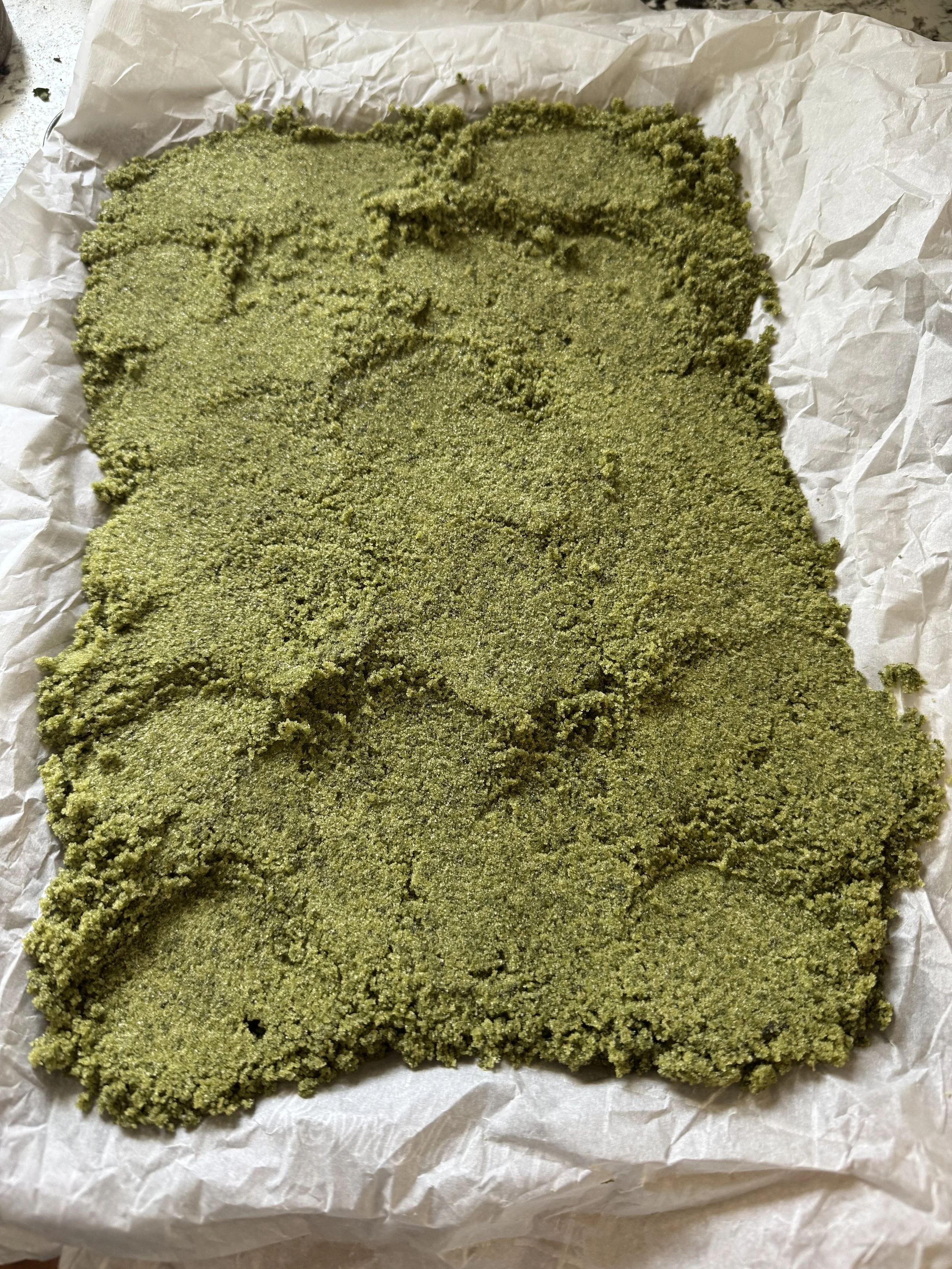How to make basil salt
Have you found yourself with a bumper crop of basil, and wondering what you can do with it besides pesto, drying, or freezing it? Basil salt is a wonderful way to preserve the harvest to use throughout the year!
If you don’t have basil don’t worry! You can order some from me, and have my garden bounty in your kitchen.
What you’ll need:
a food processor (I recommend this one because it has a built in side scaper)
fresh basil
a good quality salt like Redmond Real Salt
parchment paper and baking trays
oven
storage containers
First steps
The first thing you’ll want to do is harvest your basil. If you’re new to harvesting basil, it’s best to pinch off the basil at the Y spot in the steM. This will help it branch out and grow more.
Once it’s harvested you’ll want to wash it well, and then dry it. Once there’s no water left on the basil it’s time to begin!
You’’ll want to measure how much fresh basil you have. You’ll want to pack the basil into the measuring cup tightly and use that as a measurement. (Feel free to keep the stems on your leaves because they have a lot of flavor, and this way nothing is wasted!)
There are a lot of different ratios out there for how to make basil salt. I love basil, so I wanted a higher ration for my salt than I’ve seen others use. I choose to do a 1:1 basil to salt ratio. This means in the end I use equal parts basll and salt. Feel free to taste and add more salt or basil to your taste.
Add your basil
Now it’s time to add it’s time to add the basil into your food processor. For many things you can use your blender for, but in this instance you really need a food processor. Trust me….I tried. I went out and bought my food processor specifically to make basil salt because my vitamix did not work!
You will pulse the basil in the food processor until it has broken up evenly into little pieces.
Add salt
Once your basil leaves are evenly broken up it’s time to add your salt to the basil in the food processor. You will pulse the mixture together until it is all evenly mixed. There shouldn’t be any big chunks left, and should smell AMAZING!
Time to dry out the mixture
You will notice that the mixture is quite damp due to the liquid from the fresh basil, and will need to be dried out in order to be preserved. If you have a dehydrator you can definitely use it, but I prefer using my oven to dry out my seasonings.
You will want to line a baking tray with parchment paper, and then evenly spread the basil and salt mixture over it.
Tip: If your parchment paper likes to curl just crumple it into a ball. Then spread it back out onto your baking sheet and it will stay put!
You will place your baking try into your oven at the lowest heat setting it has (this varies between models). In about an hour you’ll want to go in and move the chucks around a bit, and then place it back into the oven to dry out a bit more. You should find that it’s completely dry and hard in a few hours in the oven.
At this point you’ll move the mixture back into the clean food processor. You’ll pulse the mixture to break it all up. Once it’s been broken down to about the size of salt granules you can transfer into whatever container you plan to store it in.
How to use basil salt
My favorite way to use basil salt is sprinkled over a fresh sliced tomato from the garden. However, it’s so versatile in the kitchen! You can use it in anything where you’d normally add basil.
It pairs well with any meat/fish, pastas, and roasted vegetables. I find that it helps complement vegetables like peppers, zucchini, and tomatoes because it helps enhance their sweetness. Which means it’s also an excellent addition to salads.
There are tons of ways to use it. Be sure to let me know what your favorite dish is to use basil salt in!



